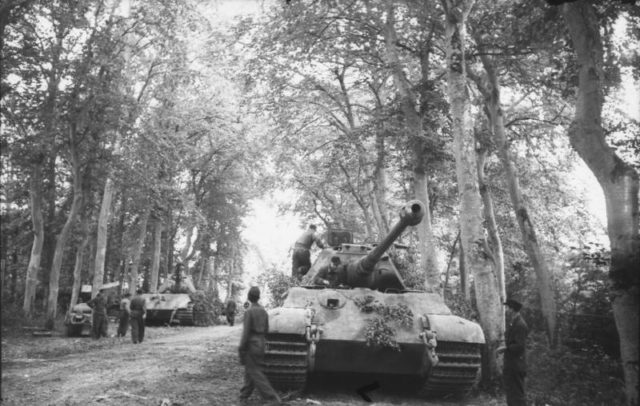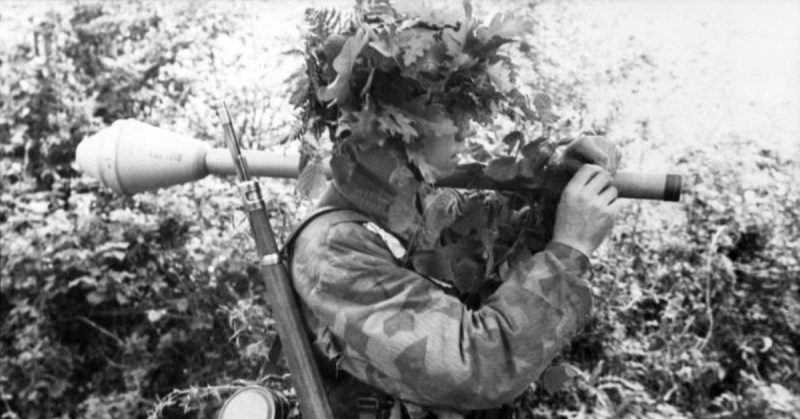There are a number of attractions to recommend in the Normandy spa town of Bagnoles de l’Orne, including its Belle Époque Quarter and its widely renowned hot springs. The village is also situated adjacent to the gorgeous natural preserve, a forested region that looks as if it sprung from a fairy tale.
Most visitors to the forest, however, are not aware of the leftovers from a gloom chapter of history that litter the pastoral woodland.
There are no signs or plaques indicating the complex system of fuel depots and secret munitions and that were established in the forest by the Wehrmacht, Germany’s army in the Second World War.
Beginning in 1943, the Wehrmacht dug hundreds of bunkers into the floor of the Forêt des Andaines to hide large quantities of provisions, munitions and fuel. They believed the supply depots would be critical in the coming defensive battle against the Allies. And they made certain that they were well concealed.
The Americans and British were aware that the enemy was storing weapons in the area. But the munitions dumps were so well concealed that Alliance air strikes were mostly ineffective.
David Passmore, a University of Toronto physical geography professor and his team, have now conducted the first, lengthy study of the area. People have known that the Nazis once stockpiled munitions in the forest close to the forest near Bagnoles-de-l’Orne.

But the breadth of the facility, in addition to its refined organizational system, was mostly unrealized.
One purpose has to do with the secrecy with which the facilities, has to do with extending across several square miles of forest, were deliberate.
No maps of the munitions dump have ever been found. To reconstruct the network of caches, Passmore and his associates were compelled to rely on diary entries from the diary of the German army’s 7th Army, which was in Normandy.
Sketches, made by Allied bomber pilots who were shot down in the area and who managed to escape with the help of the Resistance, were also of assistance.
Together, they give a picture of an extremely well-equipped military compound that even included a prisoner-of-war camp.
The individual camps belonging to the complex were given names such as Berta, Michel, Martha and Viktor. There were also countless minor foxholes for snipers throughout the area.
Eventually, though, it was not sufficient. On June 6, 1944, the Allies landed in Normandy, giving Hitler a surprise. Within 90 days, they had forced the Germans out of France.
Following the war, it was mostly the defensive fortifications cast in concrete, like those constructed by the German army along the Atlantic coast, that attracted the attention of historians.
The weapons depots in the Normandy wood, by contrast, were largely disregarded, a fact that Passmore finds to be very astonishing. He believes that the hidden caches were more than only munitions depots and conjectures that the area finally became the 7th Army’s logistics command center in Normandy.
They believe that throughout the war, the danger presented by these operational depots of the Germans was undervalued, Passmore said.
As well as the large depot complex close to Bagnoles-de-l’Orne, Passmore and his team found numerous Wehrmacht caches in Normandy, although smaller in size.
Even 70 years after the war ended, the region still lends itself flawlessly to archaeological investigation, with bunkers still readily evident, Spiegel Online reported.
Craters, as well, have remained mostly untouched in the ensuring years, most of which were created due to an American bombing efforts in the region on June 13, 1944. The biggest munitions dump in the Forêt des Andaines survived the bombing completely unscathed.
That, Passmore believes, allowed Hitler’s military to launch a counterattack in Normandy from August 7-13, 1944, well supported with material from the arms caches close to Bagnoles-de-l’Orne.
In the end, the supply depots provided some help the area’s population. After the Germans had been forced to retreat, they stole the immense caches of provisions, filled with up to 4,200 tons of food.
